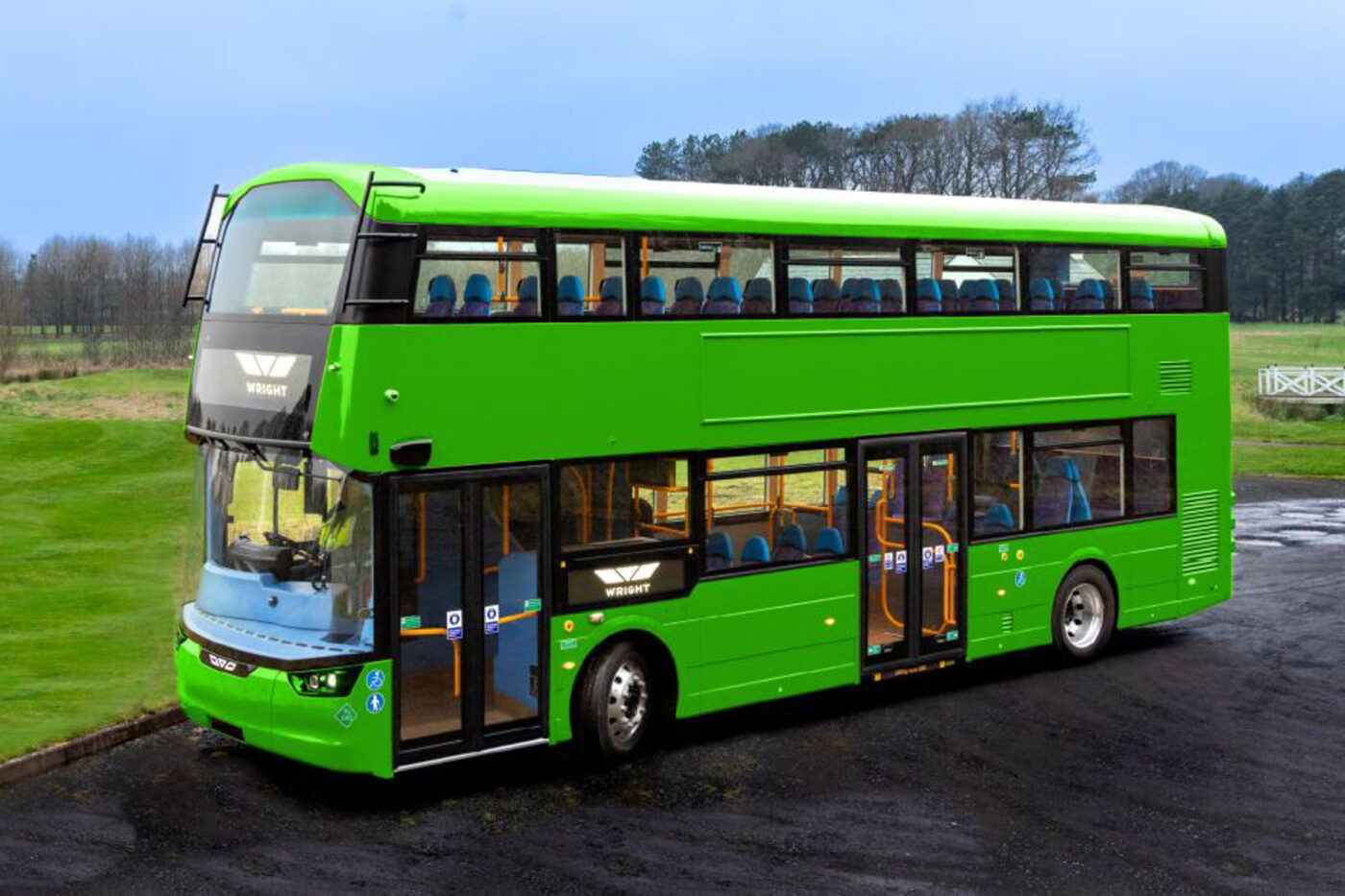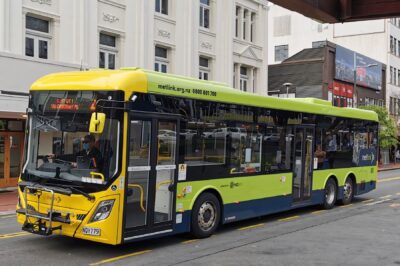Wrightbus improves H2 double-decker Streetdeck Hydroliner
According to Wrightbus, the Streetdeck Hydroliner was the first double-decker with a hydrogen fuel cell on the market when it debuted in 2020. Although the model is still very young by commercial vehicle standards at five years old, Wrightbus began further development shortly after the sales launch, resulting in the new Streetdeck Hydroliner Gen 2.0.
This is not just a slightly improved version of the same model; according to the press release, Wrightbus redesigned the bus “from the ground up” during the four-year development period. As a result, the vehicle should have a range of “over 300 miles,” i.e. over 482 kilometres. In addition, refuelling should only take eight minutes. With the “latest innovative hydrogen-powertrain innovations and technology,” the Streetdeck Hydroliner Gen 2.0 should be a “like-for-like replacement to diesel,” the company promises.
The Northern Irish company is still holding back on technical data but cites relative improvements compared to the first generation. Fuel costs are expected to fall by 20 per cent compared to its predecessor, while maintenance costs over 15 years should be as much as 30 per cent lower. As passenger capacity increased by five per cent, so did the operator’s revenue potential. That is because the model is also cheaper than the previous version. However, the heart of the bus remains a fuel cell from Ballard “alongside a highly-efficient electric traction system.” Until now, German supplier Voith has supplied the e-drive. The press release does not mention whether this will continue to be the case.
The maintenance costs are lower due to reduced component costs, and the work itself should also be easier and quicker to carry out, thanks to the improved accessibility of the components. Safety has also been improved, with a redesigned front section designed to better protect pedestrians and cyclists.
“Alongside our market-leading EV bus, 95% of all buses produced by Wrightbus at our Ballymena factory are now zero emissions – a marked changed on 2019, when 95% of all orders were for diesels. “We are truly leading the charge to net zero,” says Wrightbus CEO Jean-Marc Gales.
Not only have the percentages of drive types changed, but the capacity of the Ballymena plant has also been adjusted upwards. Wrightbus wants to increase production at its headquarters in Ballymena, Northern Ireland, by 200 buses this year and 200 next year – to 1,200 in 2025 and 1,400 in 2026. With the increase in production, Wrightbus wants to increase its workforce to 2,500 employees and create up to 1,000 additional jobs in the supply chain. “We will support 7,200 supply chain jobs by 2026. But to continue with our ambitious trajectory, we need to ensure our suppliers are building alongside us for growth and success now. We need to remain ahead of the curve,” says Gales.
In addition to the double-decker with fuel cell drive, Wrightbus offers the battery-electric double-decker Streetdeck Electroliner and the solo buses GB Kite as Hydroliner FCEV with fuel cell and Electroliner BEV with battery.
wrightbus.com (Streetdeck Hydroliner Gen 2.0), wrightbus.com (Ballymena expansion)





0 Comments